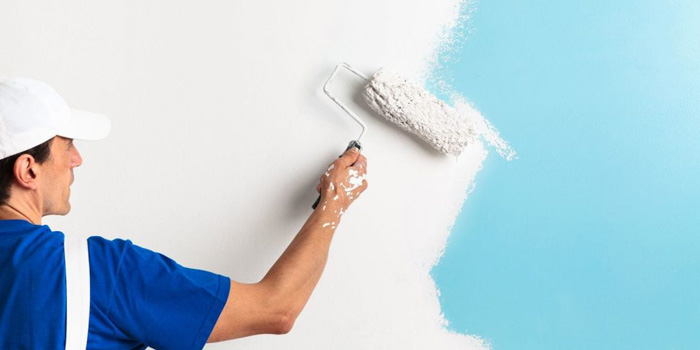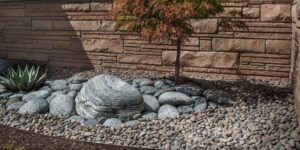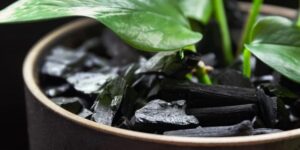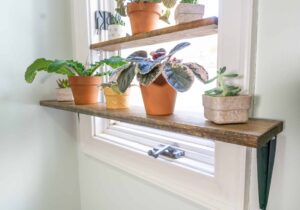
- Introduction
A. Importance of Indoor Painting
Indoor painting plays a crucial role in enhancing the aesthetic appeal and ambiance of residential and commercial spaces, transforming dull interiors into vibrant and inviting environments to get commercial painting.
B. Factors Influencing Indoor Painting Schedule
Choosing the right time for indoor painting involves considering various factors, including weather conditions, seasonal changes, personal schedules, and contractor availability.
C. Benefits of Choosing the Right Time for Indoor Painting
Timing indoor painting projects strategically can ensure optimal paint application, faster drying times, and minimal disruption to daily activities, resulting in a successful and satisfactory outcome.
II. Weather Considerations
A. Temperature Range
Ideal Temperature Conditions for Indoor Painting
- Indoor painting is best performed in moderate temperature ranges, typically between 50°F to 85°F, to ensure proper paint application and drying.
Effects of Temperature Extremes on Paint Application
- Extreme temperatures can affect paint viscosity, drying time, and adhesion, leading to issues such as streaking, blistering, or poor paint adhesion.
B. Humidity Levels
Impact of Humidity on Paint Drying Time
- High humidity levels can prolong paint drying times, causing tackiness, dripping, or uneven finish, while low humidity can accelerate drying but may lead to premature drying and brush marks.
Recommended Humidity Levels for Indoor Painting
- Indoor painting is best performed in environments with moderate humidity levels, ideally between 40% to 60%, to ensure proper paint drying and curing.
C. Air Circulation
Importance of Proper Ventilation During Painting
- Adequate air circulation is essential during indoor painting to facilitate paint drying and minimize the buildup of fumes and odors.
Ensuring Adequate Airflow for Optimal Paint Curing
- Proper ventilation helps promote even paint curing and reduces the risk of paint-related issues such as bubbling, wrinkling, or uneven sheen.
III. Seasonal Factors
A. Spring
Advantages of Spring Painting
- Spring is an ideal time for indoor painting due to moderate temperatures and humidity levels, providing optimal conditions for paint application and drying.
Considerations for Spring Indoor Painting Projects
- Springtime painting projects should be scheduled to avoid peak pollen season and ensure proper ventilation for indoor air quality.
B. Summer
Benefits of Summer Painting
- Summer offers longer daylight hours and warm temperatures, facilitating faster paint drying and curing, ideal for indoor painting projects.
Precautions to Take During Summer Indoor Painting
- Indoor painting during summer months requires precautions to prevent paint drying too quickly and minimize exposure to direct sunlight for optimal results.
C. Fall and Winter
Challenges of Painting Indoors in Fall and Winter
- Fall and winter present challenges for indoor painting due to lower temperatures, higher humidity levels, and reduced daylight hours, requiring special considerations for successful paint application.
Strategies for Successful Indoor Painting in Colder Months
- Painting indoors during fall and winter may require adjustments to indoor climate control, such as using space heaters or dehumidifiers, to maintain ideal painting conditions.
IV. Personal Schedule and Lifestyle
A. Availability of Time
Planning Painting Projects Around Personal Schedule
- Scheduling indoor painting projects during times when homeowners or occupants have sufficient time available for preparation, painting, and drying.
Allocating Sufficient Time for Preparation and Completion
- Allowing ample time for surface preparation, priming, painting, and drying ensures a successful and satisfactory painting outcome without rushing the process.
B. Occupancy and Usage
Timing Painting Projects Around Occupancy Needs
- Considering the occupancy and usage of the space when scheduling indoor painting projects to minimize disruption and inconvenience to occupants.
Minimizing Disruption to Daily Activities
- Planning indoor painting projects to coincide with times when occupants can temporarily vacate the space or adjust their daily activities to accommodate the painting process.
C. Special Events or Occasions
Painting in Preparation for Events or Holidays
- Scheduling indoor painting projects in advance of special events or holidays to ensure a fresh and welcoming environment for guests and visitors.
Ensuring Timely Completion for Special Occasions
- Planning indoor painting projects with a clear timeline to ensure completion before the scheduled event or occasion, allowing for proper drying and curing time.
V. Contractor Availability and Pricing
A. Off-Peak Seasons
Availability of Contractors During Slower Periods
- Off-peak seasons may offer greater availability of painting contractors, making it easier to schedule indoor painting projects at preferred times.
Potential Cost Savings During Off-Peak Times
- Contractors may offer competitive pricing or discounts during slower periods to attract business, resulting in potential cost savings for homeowners.
B. Peak Seasons
High Demand for Painting Services During Peak Seasons
- Peak seasons, such as spring and summer, may experience high demand for painting services, leading to limited contractor availability and higher pricing.
Factors Affecting Contractor Availability and Pricing
- Contractor availability and pricing during peak seasons are influenced by factors such as weather conditions, project demand, and scheduling constraints.
C. Scheduling Considerations
Booking Contractors in Advance
- Planning indoor painting projects well in advance and booking contractors early to secure preferred dates and ensure timely completion.
Negotiating Pricing and Terms Based on Timing and Demand
- Negotiating pricing and project terms based on timing and demand, taking advantage of off-peak periods or negotiating flexibility during peak seasons.




